As we quietly pick our way horseback along the quiet bubbling of Little Hat Creek, you’ll feel them. Perhaps it’s a sixth sense, or acuteness that we aren’t even aware of: smell, maybe, or a fleeting and subconscious capture of their motionless sentry-like form.
The perception nags at you. Slowly, an idea takes shape in your mind.
You are being watched.
Ahead of you is an undulating line of black cattle, quietly minding the trail ahead. They’ve been here before, year after year, and know the way. They proceed in single file, nose to tail, periodically checking for their offspring, often uttering a low, barely perceptible call. Their baby calls back with a short bawl; perhaps he is a few head behind. A lead cow pulls the unbroken bovine procession like beads on a string.
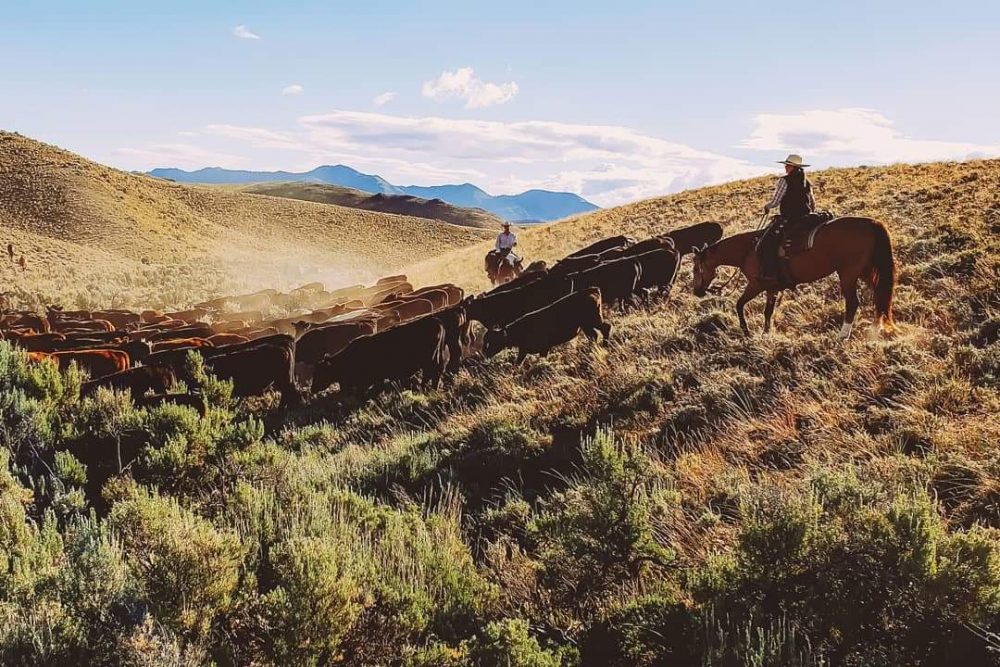
The one-foot wide trail is rocky and winds its way through tall mountain big sagebrush. This is the largest of the sage, and cows are lost in it. Its unbroken canopy can roll and swell over hills along canyon bottoms for miles.
It’s a good place to lose a sleepy calf, separated from mom and tired, thinking of taking a short siesta. The border pups help keep such from happening, thanks to their understory eyes. On horseback, I might drift on by, my view obscured by the thick carpet of sage.
I see a cow look up to the ridge, briefly. She felt it, as I did. I follow her eyes to the ridgeline, where she has confirmed instinct: indeed, there is a watcher.
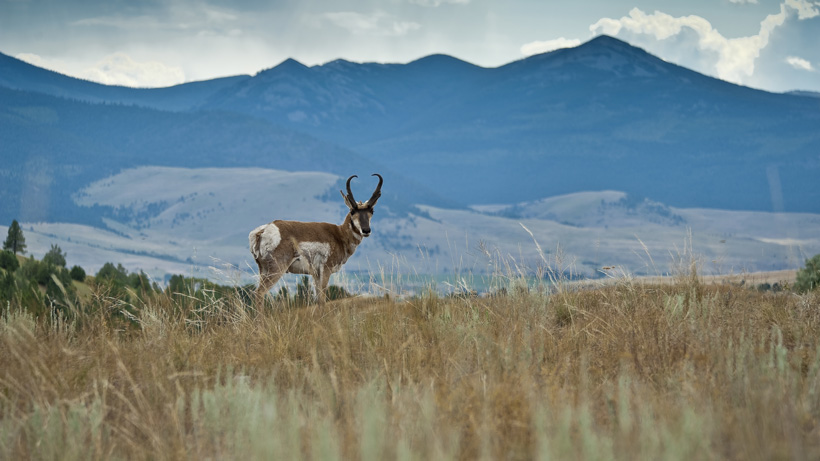
A lone silhouette punctuates the regularity of the smooth sagebrush skyline on the ridge. A sentinel. The solitary guardian of the canyon. A pronghorn buck sees us see him. His stalk is exposed, and he knows he has been discovered. Despite his safe distance of a quarter mile, he is quickly gone over the ridge, and becomes a memory.
In 1805, shortly after first describing what they called antelope, on their exploratory journey across the West, Lewis and Clark journaled the same behavior:
“Shy and timorous they generally repose only on the ridges, which command a view of all the approaches of an enemy … When they first see the hunters, they run with great velocity.”
It’s like that often, when you spot these lone males. They have sighted and have been watching you long before you spot them.
When they reach maturity, they regularly travel alone, covering vast pieces of real estate in the roll of the sagebrush ocean. They are the truest citizens of this brushy province that men have long called wasteland.
They are at home here, more than any other ungulate.
Pronghorn are often called antelope, after Lewis and Clark’s unintentional misclassification and application of their kind to the similar looking antelope of Africa’s Serengeti. Pronghorn have little connection to African antelope, However, their close cousins, and only similar relatives to them do share East African landscapes with antelope, elephants and zebras. Who are their close cousins?
They are giraffes. And when you learn this, suddenly you realize that there are similarities: head shape; diet (both are largely browsers rather than grazers of grasses). Also, their horns are true horns–not antlers, as in elk or deer, that are shed and only sported by males. Both genders of pronghorn and giraffe carry horns.
Pronghorn are particularly well suited for their life here. They eat everything from brush to cactus. They happily consume alkaloid concentrating plants that, if eaten in the same proportion to their diet would crush a cow from toxic load.
Even their coloration is cryptic; their white undersides can make them invisible from below on the steep foothills where they roam. From above, they can blend readily into the browns and tans of desert dry vegetation. Only in the green season can they really stand out. But it is of no worry. They have a secret weapon in their back pocket: terrific speed.
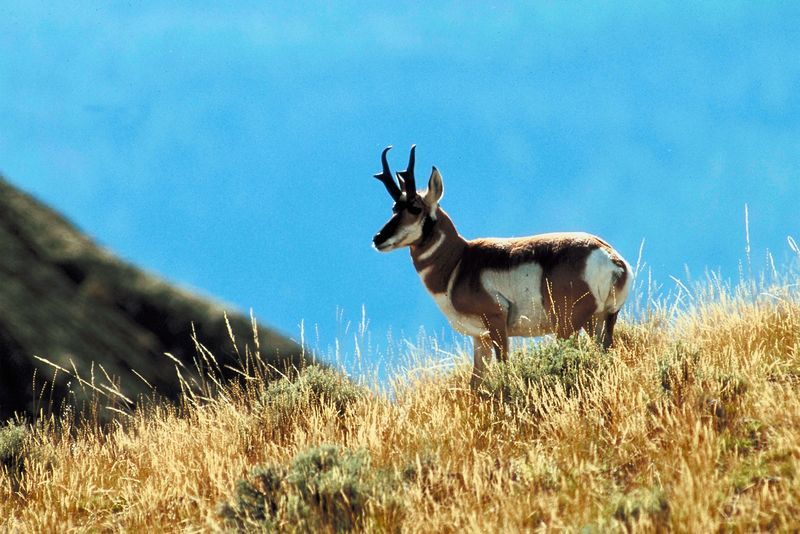
The upper Big Lost River Valley consists of a broad plain, on the other side of the Lost River range from Alderspring. The Sage Creek road, arrow straight and dirt, stretches for 20 miles along the base of the Mahogany Hills.
It was 1985, and I was driving an older model dodge pickup on that road, heading for a remote patch of timber owned by the Bureau of Land Management at the foot of 10,000-foot Jerry Peak. We were examining whether the forests were regenerating from logging operations that had ended ten years prior.
It was a hot day with no air; we had the windows wide open. I was doing about fifty-five in that Dodge on light washboard dirt. A glance in the mirror made it clear that there was no-one who would be following us anytime soon. We were churning up a fair bit of a rooster tail several hundred feet skyward. It would hang there in the stifling windless heat of the high desert floor for several minutes.
John Wilson was riding shotgun with me that day, and our sweat soaked shirts stuck to the vinyl seats. In the buffeting hot air, we both felt on the edge of drowsy, but were too hot to fall victim to the incessant urge to close our eyes, stinging with a combination of sweat and dust.
On the broad flats, distant mirage lakes shimmered the reflection of the high sun. Peaks 25 miles away in the Pioneer Mountains took on mushroom shapes, grotesquely distorted by the intense heat rippling off the valley floor.
John saw them first.
“Lopers!,” he yelled. It was what we called pronghorn. Most locals still call them antelope. If you called them pronghorn, they would know that you were from the outside and would likely think you were from the government.
I saw them through his passenger window. There were six of them. All were males, and they were keeping up, right alongside of us, just 75 feet off to our right.
They were racing.
“Punch it!” yelled John.
And so, I did. The old engine responded slowly to my urgings in the 100-degree heat, but it responded alright. In a few seconds, we were clipping along at 60. Gravel rained louder than ever in the steel of our wheel wells, nearly deafening us through the open windows.
And then it happened; as the others faded slowly back in our increase of speed, one broke away and pulled by a nose ahead of us. John and I looked at each other in disbelief, and then back at the buck, pounding through the short grass country to our flank. Little clouds of desert dust erupted with each of his footfalls. Muscles rippled and pulsed. His focused head hung motionless ahead of his surging, glistening body.
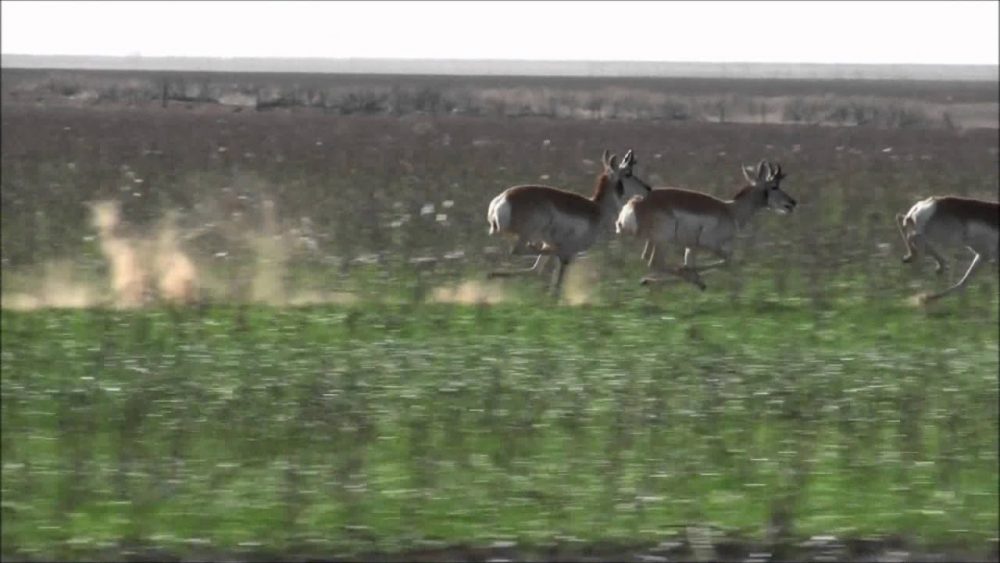
John and I were transfixed. It was all I could do to stay on the road.
And he drifted closer. And desired victory.
In one freakish instant, he burst forward, and lunged onto the roadbed in front of us, cutting us off. I didn’t even have a chance to hit the brake.
He shot ahead of us, crossing the entire width of the broad travel way, and then swung a wide arc back off to the left as he slowed down. I watched in the mirror, as his form was slowly enveloped in our dust. And he was gone.
John and I just stared ahead as we continued across the broad plain, dumbfounded. We both knew what had happened. Pronghorn, Loper, had passed us as we were going a solid 60 miles per hour.
He had simply counted coup on us, mere two-legged mortals in iron carriage. And then, in our minds, John and I knew the truth: Cheetah was ruler of speed no more. Pronghorn reigned supreme.
We were certain.
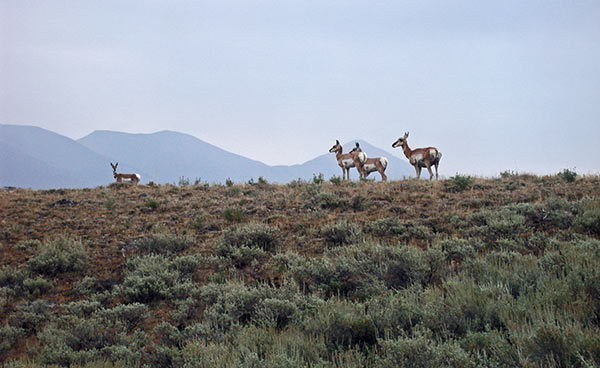
Wikipedia’s presentation of the truth according to science is this:
“The top speed is very hard to measure accurately and varies between individuals; it can run…55 mph for 0.5 mi. It is often cited as the second-fastest land animal, second only to the cheetah.”
There are strange and beautiful things we see in the mountains and remote valleys of wild Idaho. They are things that occasionally defy common knowledge and science. And it is simply a great enough thing to experience, to witness the truths of nature on its own terms. There’s no need to document, to prove.
It is simply awesome enough to know there is still unfathomed beauty and power out there for us to discover.
I hope you can find some.
Happy Trails.
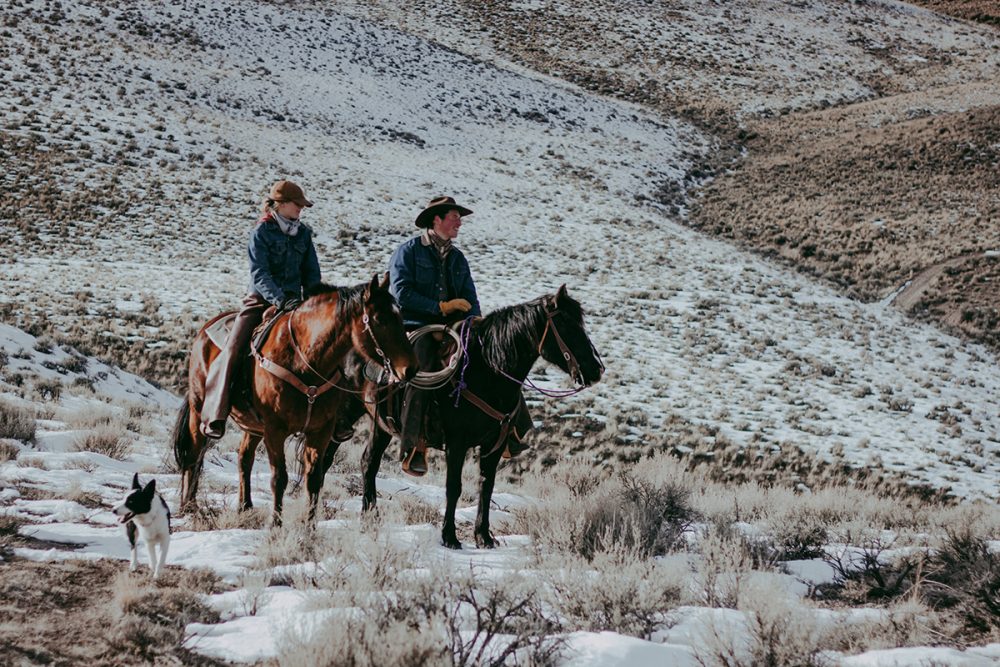





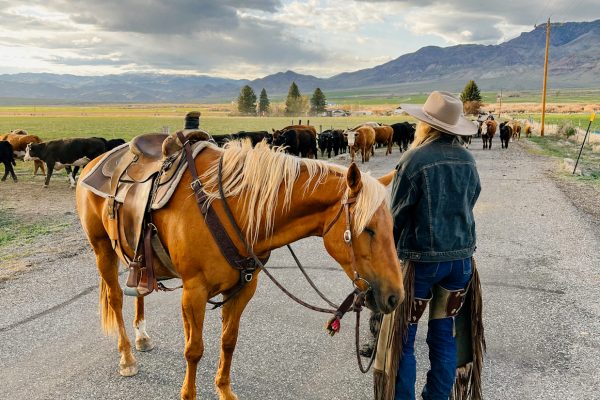

Philip Bowles
“Built for Speed; a.Year in the Life of a Pronghorn” by John Byers is a short and very well done book for any layperson who wants to learn more about these wonderful creatures.